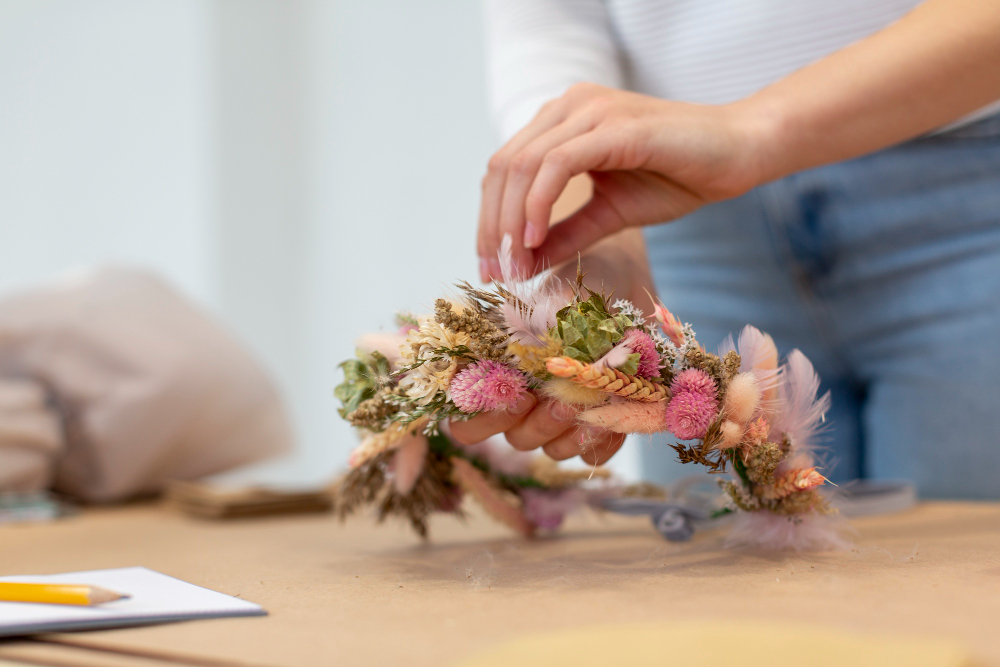Flower Preservation Techniques: How to Dry and Preserve Your Favorite Bloom
Specific mg Flower and gift shop: Mar 2024

Flowers have a way of brightening our days with their vibrant colors and delicate beauty. Whether you’ve received a special bouquet or picked blooms from your garden, preserving them allows you to enjoy their beauty long after they’ve faded. Flower preservation techniques have been practiced for centuries, with methods ranging from simple air-drying to more advanced processes like silica gel drying. In this comprehensive guide, we’ll explore various flower preservation techniques, providing step-by-step instructions and tips for preserving your favorite blooms.
Air Drying
Air drying is one of the oldest and simplest methods of preserving flowers, requiring little more than patience and a well-ventilated area. To air dry flowers, start by removing any excess foliage and trimming the stems to your desired length. Next, gather the flowers into small bunches and secure them with a rubber band or string. Hang the bunches upside down in a dark, dry area with good air circulation, such as a closet or attic. Allow the flowers to dry completely, which can take anywhere from one to three weeks depending on the type of flower and environmental conditions. Once dry, your flowers can be displayed in a vase or used in various craft projects.
Pressing
Pressing is another classic method of flower preservation, ideal for creating delicate pressed flower art or preserving flowers for use in crafts. To press flowers, start by selecting fresh blooms with flat petals, such as pansies or daisies. Place the flowers between the pages of a heavy book, making sure they are spaced apart to prevent overlapping. Close the book and place a weight on top to press the flowers flat. Leave the flowers to dry for one to two weeks, periodically checking on their progress and replacing any moist pages. Once dry, carefully remove the flowers from the book and use them to create beautiful pressed flower art, cards, or bookmarks.
Silica Gel Drying
Silica gel drying is a more advanced method of flower preservation that allows you to retain the natural shape and color of the blooms. Silica gel is a desiccant that absorbs moisture from the flowers, drying them quickly and efficiently. To dry flowers with silica gel, start by pouring a layer of silica gel into an airtight container. Trim the stems of the flowers and place them upright in the container, making sure they are not touching each other or the sides of the container. Carefully pour additional silica gel over the flowers until they are completely covered. Seal the container and leave it undisturbed for three to five days, depending on the type of flower and thickness of the petals. Once dry, gently brush away any excess silica gel and admire your beautifully preserved blooms.
Microwave Drying
Microwave drying is a quick and effective method of preserving flowers, perfect for those who want to enjoy their blooms sooner rather than later. To microwave dry flowers, start by placing a layer of silica gel in the bottom of a microwave-safe container. Trim the stems of the flowers and place them upright in the container, making sure they are not touching each other or the sides of the container. Carefully pour additional silica gel over the flowers until they are completely covered. Microwave the container on low power for two to three minutes, checking the flowers periodically to ensure they do not overheat. Once dry, carefully remove the flowers from the container and brush away any excess silica gel.
Glycerin Preservation
Glycerin preservation is a unique method of flower preservation that allows you to retain the natural softness and flexibility of the blooms. Glycerin is a natural substance that penetrates the cells of the flowers, replacing the water and preserving their natural texture. To preserve flowers with glycerin, start by mixing one part glycerin with two parts warm water in a container. Trim the stems of the flowers and place them in the glycerin solution, making sure they are completely submerged. Leave the flowers in the solution for one to two weeks, periodically checking on their progress. Once the flowers have absorbed the glycerin solution, carefully remove them from the container and allow them to air dry. Your preserved flowers can be displayed in a vase or used in various craft projects.
In conclusion, flower preservation techniques offer a wonderful way to extend the beauty of your favorite blooms and create lasting memories. Whether you prefer the simplicity of air drying or the precision of silica gel drying, there’s a method to suit every preference and skill level. So the next time you receive a beautiful bouquet or find yourself surrounded by fresh flowers, consider preserving them using one of these techniques. With a little time and effort, you can enjoy the beauty of your favorite blooms for years to come.

